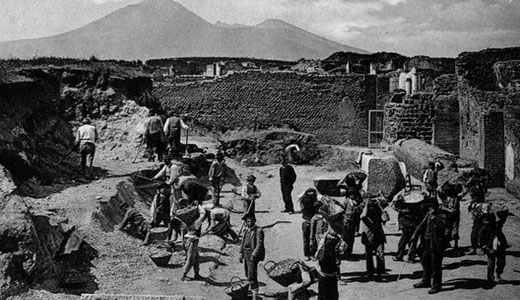
On this day in 1748, the ruins of Pompeii, the ancient Roman city that was obliterated by the eruption of Mt. Vesuvius, were discovered. The remains were found during excavations by Spanish military engineer Rocque Joaquin de Alcubierre, and surprised many due to so many buildings and wall paintings remaining well-preserved. Today, the fall of Pompeii serves as a harsh reminder of the destructive power of environmental catastrophe.
A publication by Middle East Technical University noted of the discovery, “The excavation of [Pompeii] brought to light not just individual buildings and artifacts, but an urban fabric. Not only monumental public buildings, but houses, streets, commercial units, drainage channels, fountains, wells, city walls, cemeteries, parks, and even some unfortunate inhabitants. This is truly a rare case where both public buildings and private architecture of an ancient site were uncovered in such a big scale and with such intensity.”
The earthquakes and tremors leading up to the 79 AD eruption were not recognized as the precursors they were. Vesuvius has therefore been compared to modern issues including denial of global warming’s existence and the failure to acknowledge the recent uptick of natural disasters, some of which are warning signs and many of which are correlated to climate change.
Environmental blog ClimateChange.ie asked, “What have we learned from the lessons of Pompeii? Inertia appears to be winning the war; it appears we are too comfortable in our lives. Global warming is the sum of individual actions, so the global solution will depend on small changes by billions of individuals. Two thousand years ago in Pompeii, the only ones who survived or escaped were those who recognized the growing danger. Today, we now know to some degree what to expect of climate change and how to limit its impacts.”
Photo: The first excavation of Pompeii takes place. Vassar.edu










